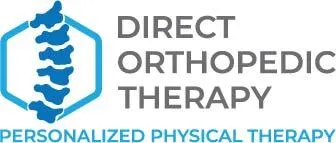You’ve probably done it. That deep neck stretch after a long day at your desk. Maybe you tilt your head to the side, hear a pop or two, and think, ahhh, relief.
But then someone tells you, “Careful — stretching your neck is bad for you.” So now you’re wondering: is stretching your neck bad, or is it the only thing keeping your head from exploding after a long day of Zoom calls?
Here’s the truth: stretching your neck isn’t inherently bad — but doing it the wrong way can absolutely lead to more tension, irritation, or even injury. The key isn’t whether you should stretch… it’s how, when, and why you do it.
Understanding the Anatomy of the Neck
The neck, or cervical spine, is made up of seven vertebrae (C1–C7), supported by dozens of muscles, ligaments, fascia, and nerves. It has a tough job: supporting your 10–12 pound head while keeping it mobile in nearly every direction.
The major muscle groups involved in neck movement include:
- Sternocleidomastoid (SCM) – Turns and tilts the head
- Upper trapezius – Elevates the shoulders, extends the neck
- Levator scapulae – Lifts the shoulder blade, contributes to side bending
- Scalenes – Assist in neck flexion and breathing
- Suboccipitals – Control fine head movement at the base of the skull
When any of these muscles get tight — from stress, posture, or injury — your neck can feel stiff, painful, or restricted. That’s when people instinctively start stretching. But if you don’t understand what’s tight and why, you might do more harm than good.
Is Stretching Your Neck Bad? It Can Be — If You’re Doing It Wrong
Let’s get one thing straight: stretching isn’t bad — but random, forceful, or excessive stretching of your neck can be.
Here’s why:
1. Overstretching Can Irritate Nerves
If you stretch aggressively — especially in positions that compress or stretch the brachial plexus or cervical nerve roots — you can create nerve irritation. That might show up as tingling, numbness, or weakness in your arms or hands.
2. Joint Instability Can Get Worse
Some people already have joint hypermobility or ligament laxity in the neck. Stretching those structures further can lead to instability, headaches, or chronic pain. This is especially common in people who habitually “crack” their own necks.
3. It Can Reinforce Poor Movement Patterns
Stretching might feel good temporarily, but if you’re not addressing the underlying cause (like poor posture, muscle imbalances, or weakness), you’re just putting a Band-Aid on the issue.
4. Cervical Artery Risk
In rare cases, aggressive neck manipulation or extreme rotation can stress the vertebral arteries. While this is rare, it’s why stretches involving forceful twisting should always be avoided — especially without guidance.
Common Causes of Neck Tightness
Before you jump into stretching, you need to know why your neck feels tight in the first place.
Poor Posture
“Tech neck” is real. Looking down at phones and screens for hours causes forward head posture and overloaded muscles.
Stress and Tension
Stress causes us to unconsciously tighten the upper trap, levator scap, and suboccipitals. That classic “tension headache”? Often from muscular tension, not dehydration.
Inactivity or Stiffness
Lack of movement — or holding one position for too long — leads to shortened muscles and reduced joint mobility.
Weakness in Supporting Muscles
If your deep neck flexors or mid-back muscles are weak, your superficial neck muscles have to work overtime. That leads to tightness and overuse.
Past Injury or Whiplash
Even minor injuries can cause protective guarding in the neck — and that can turn into chronic tightness if not addressed properly.
Diagnosing What Your Neck Actually Needs
At Direct Orthopedic Therapy, we don’t just say “stretch this.” We figure out what needs to be stretched, strengthened, or stabilized.
Self-Checks You Can Try
- Chin tuck test: Can you tuck your chin straight back without tilting your head down? If not, you might have suboccipital tightness.
- Side bend test: Can you bring your ear toward your shoulder without lifting your whole shoulder? That’s a sign of trapezius and scalene tension.
- Rotation check: Can you rotate your head 80–90 degrees in each direction without pain or stiffness?
If any of those are limited or painful, you may benefit from treatment that includes targeted stretching and more — but not blind stretching.
Safe Ways to Stretch Your Neck
When done intentionally, neck stretching can be a powerful tool. Here are a few safe methods we teach at Direct Orthopedic Therapy:
1. Upper Trap Stretch
- Sit tall
- Gently tilt your head to one side
- Use your hand to apply light pressure (don’t pull!)
- Hold for 20–30 seconds, breathing deeply
2. Chin Tuck
- Stand or sit with good posture
- Tuck your chin straight back, like making a double chin
- Hold for 5 seconds, repeat 10 times
This activates the deep neck flexors and reduces suboccipital tightness.
3. Levator Scap Stretch
- Tilt your head down and to the side (like looking into your pocket)
- Reach over with your hand and gently guide your head
- Keep your opposite arm down and back
- Hold 20–30 seconds
These are safe, effective, and controlled. No jerking, no bouncing, and definitely no DIY neck cracking.
What to Avoid
Let’s keep it simple: don’t do these without professional guidance:
- Forceful neck rotations or rolls
- Pulling on your neck with both hands
- Cracking your own neck habitually
- Stretching through nerve pain or tingling
- Stretching without warming up or knowing your limits
Treatment Options Beyond Stretching
If your neck pain or tightness isn’t going away, it’s time to get help. Stretching can only take you so far — and sometimes it’s the wrong tool entirely.
At Direct Orthopedic Therapy, we offer:
Dry Needling
Postural Retraining
We correct the root cause — so your neck isn’t working overtime to support poor posture.
Strengthening Exercises
We target the deep neck flexors, thoracic stabilizers, and scapular muscles to support your head and neck without overloading the wrong areas.
Preventing Neck Pain and Tightness
Here’s how to keep your neck healthy for the long haul:
- Change positions frequently (every 30–45 minutes)
- Keep screens at eye level
- Avoid prolonged looking down at your phone
- Do regular posture resets and mobility drills
- Build strength in your upper back and core
It’s Time to See a Pro
At Direct Orthopedic Therapy, we look beyond symptoms. We figure out the why, fix it at the root, and build a plan so it doesn’t come back. Whether you need manual therapy, dry needling, postural rehab, or just smarter stretches — we’ve got you.
Book your neck assessment today and stop guessing. Start moving better.



